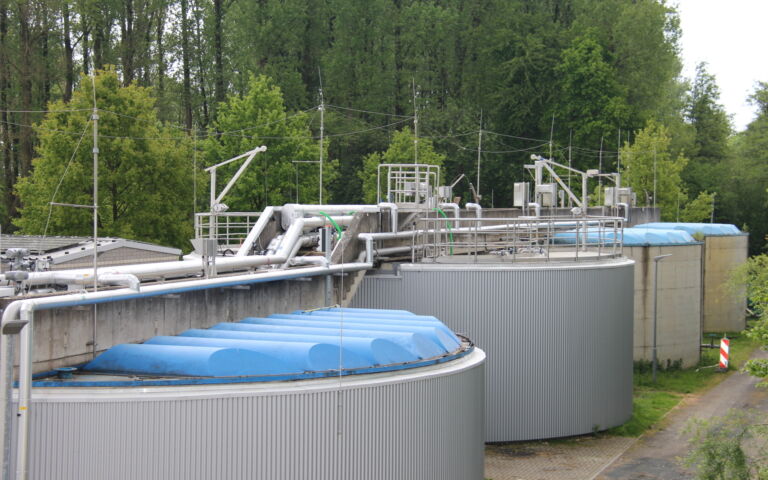MBR capacity – China and RoW

Simon Judd has over 35 years’ post-doctorate experience in all aspects of water and wastewater treatment technology, both in academic and industrial R&D. He has (co-)authored six book titles and over 200 peer-reviewed publications in water and wastewater treatment.
Note: This article was written in 2016. For the latest list see: Largest plants worldwide.
According to my imperfect filing system, it’s been a whole year since the burning issue of global MBR capacity was pondered on this very blog.
The total number of MBR installations and their combined capacity is probably the thing we get asked about more than anything else − particularly, for some reason, relating to the US and specifically by North Americans. This is still a matter of some bemusement to myself and my life partner, given that neither of us hail from that fair country. Perhaps we are blessed with second sight on this subject? Or maybe there’s a special throbbing red phone at Judd Mansions specifically dedicated to the technology suppliers for such occasions as the commissioning of new installations:
‘Hi Simon and Claire, just to let you know that we’ve just finished putting in a 1.2 MGD plant at a chicken ranch in Wyoming.’
No seriously, it’s good to be kept informed, and we do appreciate all such calls to the MBR Installations hotline. If only people did call us. If only there were a hotline. If only our internet worked. And the printer.
In the blog of March 2015, it was mentioned that the company Origin Water, based in Beijing, had almost 3 GLD (that’s 3,000 megalitres per day) of installed capacity to its name, the largest being at Xingyi in Guizhou province. This plant weighs in at over 300 MLD which, while still only 35% of the capacity of the plant at Henriksdal, is nonetheless of the same order of magnitude as the plants under construction at Canton (Ovivo) and Acheres (GE) (Largest MBR plants).
What’s really striking, however, is the volume of large municipal MBR plants based on the same technology (OW’s own PVDF-based HF ‘MBRU’ technology). At the last count (see table below) the company had 20 installations rated at 100 MLD or more, and 35 of more than 50 MLD. That puts the average capacity of these 35 plants at more than 110 MLD. That’s a whole lotta fibre.
So, if there’s 4 GLD of capacity from these 35 MBR plants relating to a single supplier in China − and that’s without even considering other Chinese suppliers and the significant penetration of the Chinese market by the established Japanese MBR technology providers plus the more recent Taiwanese and Singaporean ones − what does that imply regarding the global capacity?
It’s obviously not something that can be readily extrapolated. Even with the slowdown in the Chinese economy, OW appear to have managed to increase their installed capacity by 25% in around year. Various market analyses continue to point to double digit growth in implementation. So, if the best guess was, conservatively, 15 GLD a year ago, then that would imply that it would be somewhere between 17 and 20 GLD today.
Sounds impressive, until it’s considered that globally about 1000 GLD of sewage is being generated. So, still room for improvement. And plenty of room in the market for all, it would seem.
| Installation | Location | PDF (MLD) |
|---|---|---|
| Water affairs Integrative EPC | Xingyi, Guizhou | 306.6 |
| 9th and 10th WWTP | Kunming, Yunnan | 250 |
| Sanjintan upgrading and expansion of WWTP | Wuhan, Hubei | 200 |
| Caotan WWTP PPP project | Xian, Shaanxi | 200 |
| Jilin WWTP Renovating | Jilin, Jilin | 200 |
| Shendinghe WWTP | Shiyan, Hubei | 180 |
| Qinghe reclaimed water plant phase II | Beijing | 150 |
| East City WWTP phase III | Nanjing, Jiangsu | 150 |
| Taoziwan WWTP phase II | Yantai, Shandong | 150 (half underground) |
| Jilin WWTP Phase II | Jilin, Jilin | 150 |
| Purchase of Xianghu WWTP membrane process | Changsha, Hunan | 140 |
| Jinyang WWTP | Jinyang, Shanxi | 120 (underground) |
| Huangcun reclaimed water project | Daxing, Beijing | 120 |
| Wenyu river project | Shunyi, Beijing | 100 |
| Beijiao WWTP renovation project | Ordos, Inner Mongolia | 100 |
| Total package of Qianshan water purification plant equipment | Zhuhai, Guangdong | 100 |
| Xianlin WWTP PPP project | Nanjing, Jiangsu | 100 |
| Beijiao WWTP | Ordos, Inner Mongolia | 100 |
| Zhengding new district WWTP | Zhengding, Hebei | 100 |
| Chengxiang WWTP Phase I | Haiyan, Zhejiang | 100 |
| High-tech industrial development zone WWTP | Shijiazhuang, Hebei | 80 |
| Wandong WWTP PPP | Zhuji, Zhejiang | 80 (underground) |
| Mentougou WWTP Phase II | Mentougou, Beijing | 80 |
| Dali WWTP phase II | Dali, Yunnan | 75 |
| Gongbei water purification plant expansion project | Zhuhai, Guangdong | 70 |
| Hohhot Bandingying WWTP renovating | Hohhot, Inner Mogolia | 70 |
| Miyun new city reclaimed water plant | Miyun, Beijing | 65 |
| 4th WWTP renovation project | Kunming, Yunnan | 60 |
| Laoyuhe rain water treatment plant | Kunming, Yunnan | 50 |
| Luolonghe WWTP | Kunming, Yunnan | 50 |
| Hexi reclaimed water plant | Fengtai, Beijing | 50 |
| Chengbei WWTP phase IV | Wuxi, Jiangsu | 50 |
| Meicun WWTP | Wuxi, Jiangsu | 50 |
| Dongting WWTP phase IV | Wuxi, Jiangsu | 50 |
| Dongqu WWTP renovation project | Beijing | 50 |
| TOTAL | 3946.6 |








